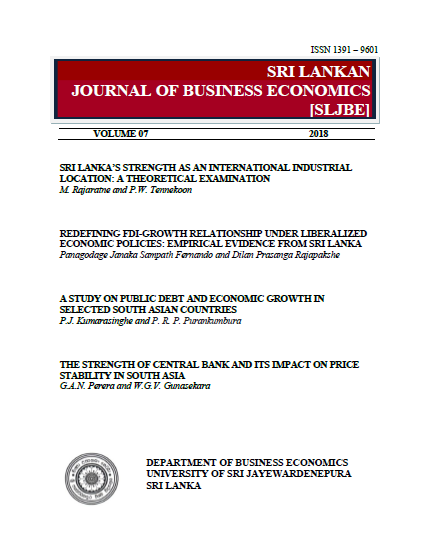SRI LANKA’S STRENGTH AS AN INTERNATIONAL INDUSTRIAL LOCATION: A THEORETICAL EXAMINATION
Abstract
Sri Lanka, in 1978, introduced outward looking export oriented industrialization (OL-EOI) policy with heavy reliance on foreign direct investment (FDI) against the three decade long inward looking import substitution industrialization (IL-ISI) policy that had caused serious impediments to economic development. Although four decades have passed since then, theoretically founded analyses to assess Sri Lanka’s locational soundness are scarce. Thus, this study adopts the Investment Development Path (IDP) framework of John Dunning and Rajnish Narula (1996) for assessing the strength of Sri Lanka as an international industrial location. This study primarily traces the investment development path of Sri Lanka for the past seven decades (1950-2015) covering two policy regimes, namely; relatively closed economic policy regime (1950-1977) and the open economic policy regime (1978-2015). The findings reveal that Sri Lanka has only been able to reach the early second stage of the IDP. This fact can be appropriated to insignificant FDI inflows in consequent to meager supply of location specific created assets (Lca) in contrast to heavy reliance on location specific natural assets (Lna).
Keywords: Foreign Direct Investment, Investment Development Path, location specific natural assets, location specific created assets

